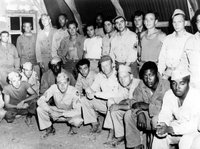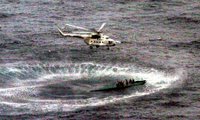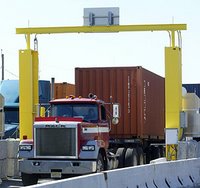
It is unfortunate that recent articles and blog postings have chosen to spend so much time complaining about the past instead of the critical and substantive benefits the National Applications Office (NAO) will provide the American people in the future. We need to move forward, get the NAO fully operational, and demonstrate how this 21st century capability will greatly aid the work of our scientists, our nation’s first responders, and others charged with protecting the United States.
The NAO will act as a clearinghouse for available technologies such as overhead imagery to better serve the scientific, homeland security and, eventually, law enforcement communities, with a solid framework to protect privacy, civil rights and civil liberties. It is a good-government solution to assist those users, and there is nothing secretive or mysterious about its mission. In fact, the scientific work of the NAO has been done for more than 30 years by the Civil Applications Committee (CAC), which itself will become part of the NAO. But the CAC model is 30 years old, and the world we live in is far different and, in many ways, more complex than when the CAC was first formed.
In 2005, the
Office of the Director of National Intelligence and the
U.S. Geological Survey, which chairs the CAC, chartered a blue-ribbon commission to review how the CAC facilitated, managed and oversaw capabilities and resources of the Intelligence Community for appropriate domestic applications. The commission concluded that there is “an urgent need for action because opportunities to better protect the nation are being missed.” It recommended the creation of an entity “to provide a focal point and act as a facilitator to [overhead imagery and other resources] on behalf of civil, homeland security and law enforcement users.” The Commission’s report is available in its entirety to the public. This was quite a public birth of the NAO.
The NAO will provide an excellent tool to help keep all Americans secure. Examples of how NAO will use overhead imagery for appropriate domestic purposes include:
- Saving lives through support to forest firefighters, as we saw with the wild fires in California last year and again this year
- Preparing for National Special Security Events such as this year’s political party conventions
- Assisting preparedness, response and recovery efforts of catastrophic flooding
- Helping to secure our nation’s borders
- Supporting the U.S. Coast Guard in its search and rescue operations and oil spill response
- Assessing the readiness in advance of a natural disaster
- Assessing damage following natural disasters such as hurricanes, earthquakes and floods
- Geospatial mapping
- Preparing environmental studies relating to geologic features, forestation, studies of wildlife, and other environmental research.
NAO will facilitate access only to geospatial intelligence (e.g., overhead imagery and mapping), measurement and signature intelligence (e.g., seismic acoustic sensors used to identify seismic activity such as earthquakes and tsunamis), and electronic intelligence (e.g., using emitters to rescue ships at sea during Hurricane Katrina). NAO will not accept requests to use capabilities to intercept verbal communications, whether written or oral.
I am not sure what some commentators meant when they said the NAO lacks for champions. All they needed to do was ask a homeowner whose home was saved by the kind of overhead imagery NAO will be able to provide firefighters. Or they could have spoken to me, who has served this country as an intelligence officer for 50 years, or to my bosses, Department of Homeland Security Secretary Michael Chertoff and Director of National Intelligence Michael McConnell. The homeowner or any one of us in government service would have been happy to explain how the NAO will benefit the American people.
The Department of Homeland Security, with the assistance of a number of partner agencies, has designed the NAO with an extraordinary amount of scrutiny and oversight to ensure that the civil liberties, civil rights and privacy of Americans are protected. A National Applications Executive Council will oversee the NAO. It will be chaired by the Deputy Secretary of
DHS, the Deputy Secretary of
Interior, and the Principal Deputy Director of National Intelligence, and aided by their policy, legal, privacy, and civil liberties and civil rights advisers.
Both the
Privacy and Civil Rights and Civil Liberties offices of DHS thoroughly reviewed the NAO Charter and other plans, and completed privacy and civil liberties impact assessments. In addition,
DHS’ Inspector General reviewed the NAO’s privacy stewardship and issued a very favorable report.
(download PDF reader)
The NAO will safeguard privacy, civil rights and civil liberties by ensuring that its procedures are in accordance with laws, policies and procedures that protect privacy, civil rights and civil liberties, including:
- The U.S. Constitution
- Executive Order 12333 and the procedures for intelligence community members under that order that have been approved by the Attorney General
- The Posse Comitatus Act
- The Privacy Act of 1974, as amended
- The E-Government Act of 2002, Section 208
- Any other applicable laws, policies or procedures that have the purpose or effect of safeguarding privacy, civil rights, or civil liberties
Because it is a part of DHS, the NAO is subject to compliance oversight by the DHS Inspector General, Chief Privacy Officer, and the Officer for Civil Rights and Civil Liberties. Additional oversight will be provided by the Civil Liberties Protection Officer for the Office of the Director of National Intelligence.
Secretary Chertoff and I have fully and frequently briefed all the relevant committees of Congress, and remain committed to answering any further questions they may have. We look forward to the completion of the Government Accountability Office’s review of the Secretary’s certification that privacy and civil rights/civil liberties are addressed by NAO, so that the NAO can begin its civilian and homeland security applications.
I work every day to help keep the homeland safe. The NAO, with the privacy, civil rights, and civil liberties built in as described above, is not only good government but needed now to help the nation respond and recover from all disasters – natural or man-made.
Charlie Allen
Under Secretary for Intelligence & Analysis
Labels: civil rights and civil liberties, National Applications Office, privacy













